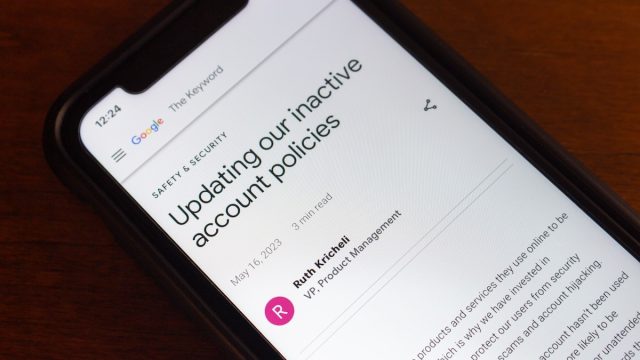Google Will Delete Email Accounts in Just 9 Days—How to Protect Yours

I don’t think I’m speaking just for myself when I say my Gmail account is like a lifeline. Need to find a photo of your ID when you’ve forgotten your wallet at the doctor’s office? There’s probably one you emailed yourself in the past few years. Need to reach out to your old boss for a reference? You can probably dig out their email address somewhere. And then let’s not forget everything that goes along with our email account—Google Photos (those vacation pics from 2013 exist somewhere!), Google Drive (where all your tax info from the past six years is stored), and the list goes. Needless to say, when we saw the news that Google would be deleting email accounts in just nine days, alarm bells went off. But fear not; we’re here to tell you how you can protect your account.
RELATED: How to Identify Phishing Emails: 7 Easy Ways to Spot a Scam.
First, it’s important to understand that the accounts at risk are those that Google deems “inactive.” Per the company:
An inactive Google Account is an account that has not been used within a 2-year period. Google reserves the right to delete an inactive Google Account and its activity and data if you are inactive across Google for at least two years.
This policy applies to your personal Google Account. This policy doesn’t apply to any Google Account that was set up for you through your work, school, or other organization.
Google also reserves the right to delete data in a product if you are inactive in that product for at least two years. This is determined based on each product’s inactivity policies.
According to Forbes, these accounts will start to be deleted on Sept. 20.
When Google first announced this policy in May 2023, Ruth Kricheli, the company’s vice president of product management, explained that it was being done for safety reasons, as these types of accounts are more vulnerable to “security threats, like spam, phishing scams and account hijacking.”
“Our internal analysis shows abandoned accounts are at least 10x less likely than active accounts to have 2-step-verification set up. Meaning, these accounts are often vulnerable, and once an account is compromised, it can be used for anything from identity theft to a vector for unwanted or even malicious content, like spam,” she wrote in a blog post.
RELATED: Customers Slam “Greedy” Verizon for Slashing Autopay Discount by 50%.
As for the upcoming purge, Google says it will give those with inactive accounts ample warning via emails to said account and emails to a recovery account if one exists.
If you want to protect your account, you can take one of the following actions to make it “active,” per Google:
- Reading or sending an email
- Using Google Drive
- Watching a YouTube video
- Sharing a photo
- Downloading an app
- Using Google Search
- Using Sign in with Google to sign in to a third-party app or service